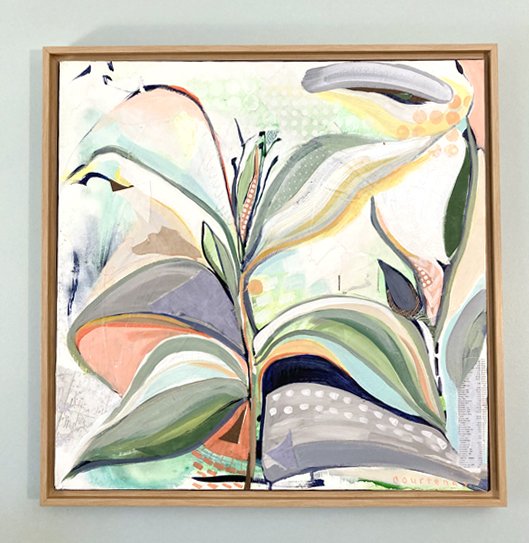Understanding Art through 4 Theological categories
Today, I want to share four ways to think about art.
For the Christian, I think we have an opportunity to understand and appreciate the expression of Visual Art as it pertains to the Lord (even if we do not make art ourselves). It is possible! And I want to share a few categories that will aid in our understanding and response to the broad field of Art.
We can develop art correlations based on the Gospel. These categories are helpful to give us perspective: The arts of creation, of man in the image of God, of the fall, and of redemption.
Vincent Van Gogh, “Wheatfield with Cypress”, 1889
The Arts of Creation
Both the world and man are seen by the Christian worldview as created by God. Man is placed in creation, for one thing, to rejoice in it. By nature man is finite and sinful, and in the final sense, he can only see creation through his finiteness and his sinfulness. However in the arts, it is possible for man to come close to the purity of nature, than he can in other activities.
Artists like Monet, Van Gogh (pictured above), and action painters like Pollock all show us aspects of creation. Monet reproduced glorious sunlight and brought a new luminosity of nature. Van Gogh painted an earth that seemed to be alive, united by the dynamic flow of energy in each brushstroke. Action painters preform the arts of creation, bringing into existence a structure that has never been in existence before.
Together with many other artists throughout time, these artists all work to show us fresh aspects of the world around us.
This charcoal drawing represents Psalm 46:10 “Be still and know that I am God”. The grand beauty of the trees reminds us of the splendor of God. The bench invites us to come sit a while, just as God the Father invites all to draw near. And the reflective water shows that all things are laid bare before the Lord; He knows all and sees all. It is comforting and good to be in His presence.
Pablo Picasso (Spanish, 1881–1973), Nude in an Armchair, summer 1909
Man in the Image of God
According to Genesis, man is appointed to have dominion over the earth and to subdue it. Therefore, art should be under man’s rule as well. Through it, he imposes order and seeks to give man grasp and dominion over creation.
Aritsts like Caravaggio, Picasso (seen above), and Mondrian use art to illuminate man’s place in the world. Picasso used cubism for contruction of the world, showing man’s control over the object. Man was free from the constraints of the object through the breaking of form. Mondrian is the most “architectural” of all abstract painters as he used lines and squares to compose an answer to a chaotic world. His tightly balanced lines and proportions imposed rhythm, harmonic balance, and cosmic order. Caravaggio vivdly expressed crucial moments and scenes. He used chiaroscuro to transfix ssubjects in bright shafts of light and darkening shadows in order to show the realigyt of the subject, and the vividness of the passing moment. He paints not a world of daydreams and imaginations, but our real place in it, a world of reality.
This is my artwork example that fits into this category. “New Life” represents the larger concepts of being alive in Christ, growth, and sunlight. By rearranging natural plant shapes and by unifying the background and foreground, this classical subject is given fresh perspective.
Edvard Munch, The Scream, 1893
The Arts of the Fall
The biblical drama pictures man as fallen and as having sinned against God. Thus man has broken the goodness of his relationship. An artist, as a person of sensitivity, is especially aware of the brokenness of man and the world. Falllen existence itself or the kind of world that results from the Fall comprise the Arts of the Fall category.
Artists like Dali, Munch (pictured above), and de Kooning all represent this category well. Dali introduced psychiatry into the field of painting and emphasized man’s subconscious. Surrealism was born and objects were torn form their natural context to construct a new internal world of dreams and memory. Munch wrestled with passions, cruelty, and the despair of man trapped in his human dilemma. By portraying his own problems he in turn helps others face their own problems. Lastly, de Kooning paints his irritations of relationships that are too personal and too terrible to endure.
The Christian sees tragedy not as an end of man, but as the consequences of sin and revolt. There is always hope beyond the tragedy. This is the end to which Christian artists labor, to show the Hope.
Here is my artwork that demonstrates "The Art of the Fall”. This painting represents the larger concepts of confronting sin and being set free. He is able to show you your sin and rescue you from its hold. Praise God!
Georges Rouault, Paysage Biblique, 1953
The Arts of Redemption
Another emphasis of the bible is that GOd is involved in a redemptive process through Jesus to transform the old into a new creation, thus bringing peace between man and God. Man cannot make redemptive art, but he can make art that communicates what he experiences of redemption as a man, whose eyes have been opened and whose soul has been purified.
Artists such as Rembrandt, El Greco, and Rouault encompass the great Christian tensions of sin and holiness in their work. Rembrandt (1600s) was introduced to the Bible as an adult, and it completely changed his style and subject matter. To convey his new understanding of truth he set out to create etchings of biblical stories. El Greco portrays heavenly visions and figures turning inward and upward. He uses color and form to emphasize the magnitude of Christs suffering and our response to it. Rouault was a devout Christian. His expressionistic artwork used black lines and glowing stained-glass tones of somber colors to express religious truths and the sufferings that Christ holds on our behalf.
“Peace”
Here is my artwork “Peace” that falls into this category. This artwork represents the chaos of humanity juxtaposed against the peace offered to us through Jesus. The position of the dove, wings outstretched and the halo behind its head, reminds us of Jesus's work on the Cross, when His arms where outstretched; making peace between man and God.
This image contains a message of hope in the midst of our worries, conflicts and prayers.
As we have seen, Christians have the opportunity to be intereseted in all Art. Naturalism and Impressionism can teach us much about the earth. Cubisim, Abstract art, and Action painting reveal the creative power of man created in God’s image. Many Expressionists reveal man’s alienation and despair. Thankfully, Christians see the run of sin in man and on the earth as a cry for help, not as an end, but as a seed bed of hope. Modern and Baroque artists point us to heavenly visions to answer the call of help from a sin-infested world.
Above all Christians can look at all art, find the truths of humanity and see the possibility of art to celebrate the triumphant answers we have through Jesus.
We can enjoy the Lord through Visual art!









